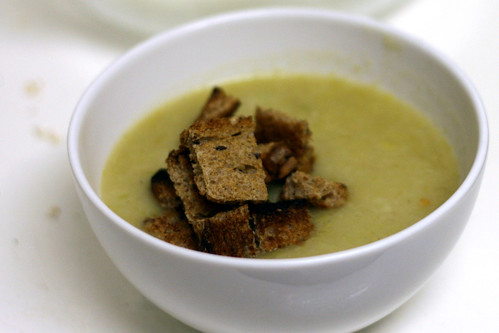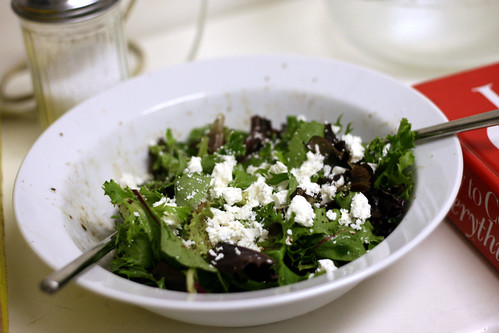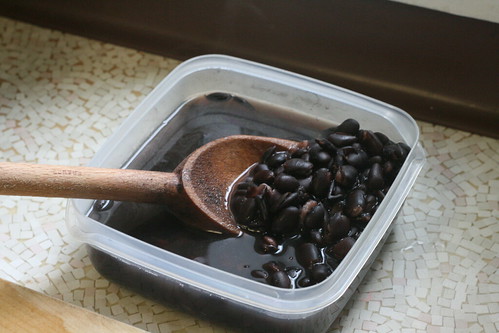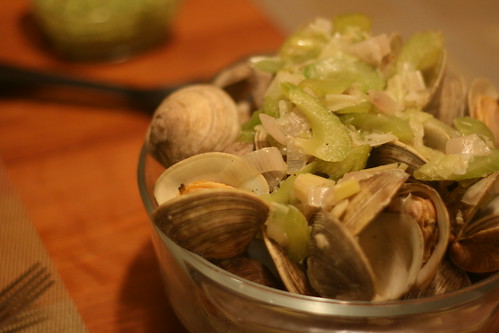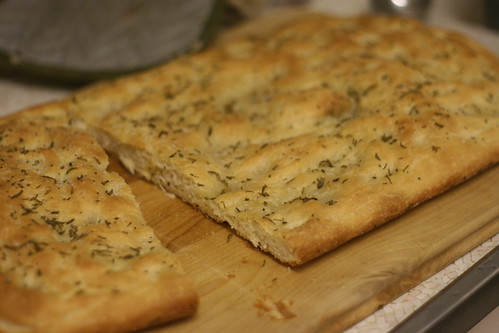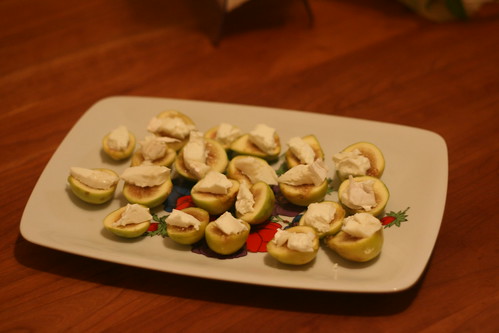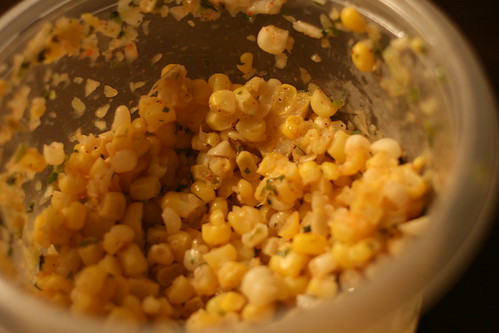So, this dinner was held at my parents' last month, during the hottest days of August, when we really didn't want to turn on the oven. So, salad party! With an essential assist from Sullivan Street Bakery's pizza bianca.
First up was the Bean Salad. At first glance, it's not the most exciting recipe in the world. Sitting there on p. 215, it's just onion, salt, pepper, cooked or canned beans, olive oil, vinegar (or lemon juice) and some parsley. There's a list following, "7 Simple Last-Minute Additions to Bean Salads" that has some good ideas. But it's not until you make your way to p. 216 that the variability really hits you: here we have a full-page chart of variations (eight in all) of Bean Salad. You think you can go either way on bean salads, but what about a Spicy Black Bean Salad? Chickpea Salad w/ Chutney? Meditteranean Stlye White Bean Salad? Yeah, I thought so.
The latter is what Mom decided on: white beans with tomato, cucumber, a bit of shallot, and lemon juice for the acid. This salad was delicious and I imagine the leftovers tasted even better after the additional soak time.
Next up was Tomato, Mozzarella, and Basil Salad, also known as the Caprese salad. This is one of those recipes that is so simple it's almost sitting there on the page, mocking you. "You really need me, asshole?" it seems to taunt, complaining to its recipe friends what an idiot you are.
Cut up some tomatoes (using good ones is important). Cut up a ball of mozzarella. Tear up some basil leaves. Layer it all on one plate. Salt, pepper, drizzle with olive oil (I like a splash of balsamic, too, though Bittman omits this). Done. A combination that's as common as PB&J, and with good reason.
Next up was Bittman's Chicken Salad with Olive Oil and Fresh Herbs, a lighter alternative to the usual mayo-heavy chicken salad. This recipe is free of any mayo--it's just shredded chicken, shallot, olives, lemon juice and zest, and a whole lot of any type of herbs you like (fresh, not dried, if possible). You can also add a bunch of torn greens, though we declined to do so.
This recipe, like the Bean Salad, is really just a matter of throwing everything into a bowl and mixing it up. It's delicious, and it's nice to not have all that mayo--makes the salad a lot more chickeny.
Finally, we made a salad not from
How to Cook Everything, but rather from Bittman's
list of 101 simple salads for the summer. This one (#48!) was simply sliced fennel and plums (hello food processor!) tossed with a cider-ginger vinaigrette. Simple, interesting, refreshing, this may have been the star of the table.
It may have been, if we hadn't served it all with the
Sullivan Street Bakery's pizza bianca, which very well may be the most delicious bread in the world. This meal was one of the best of the project so far. Salads: who knew?

